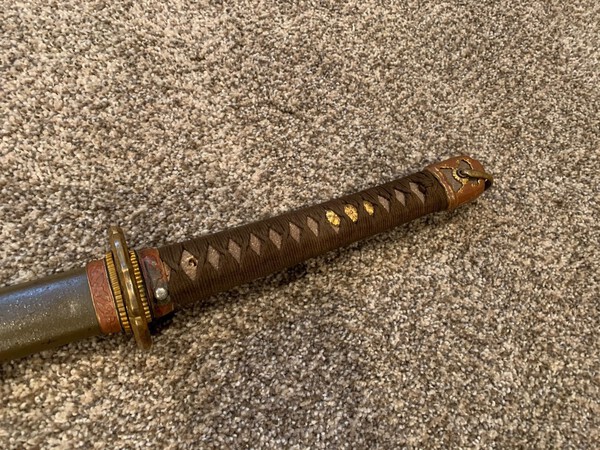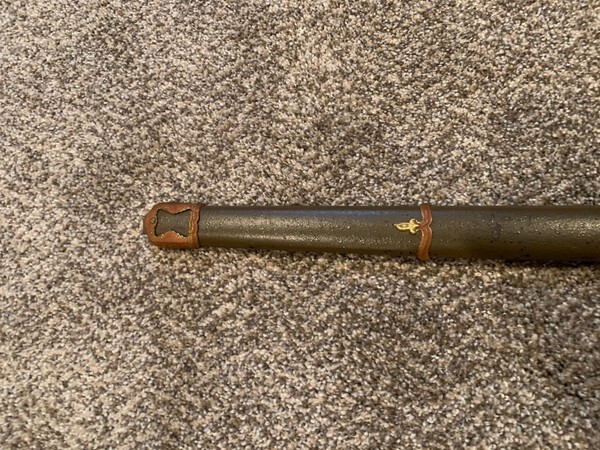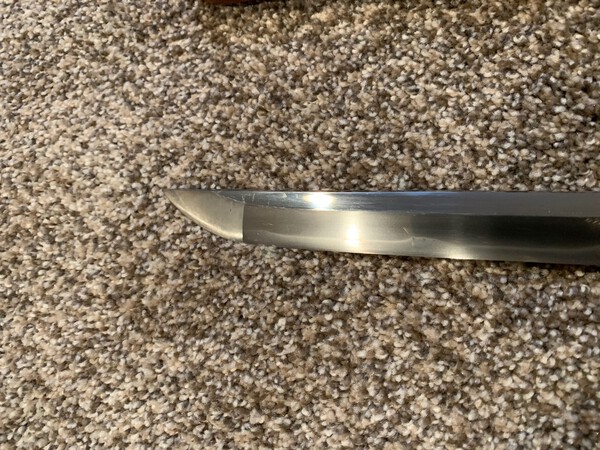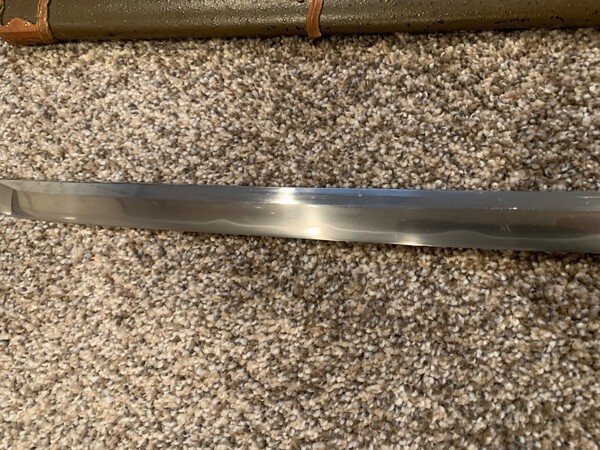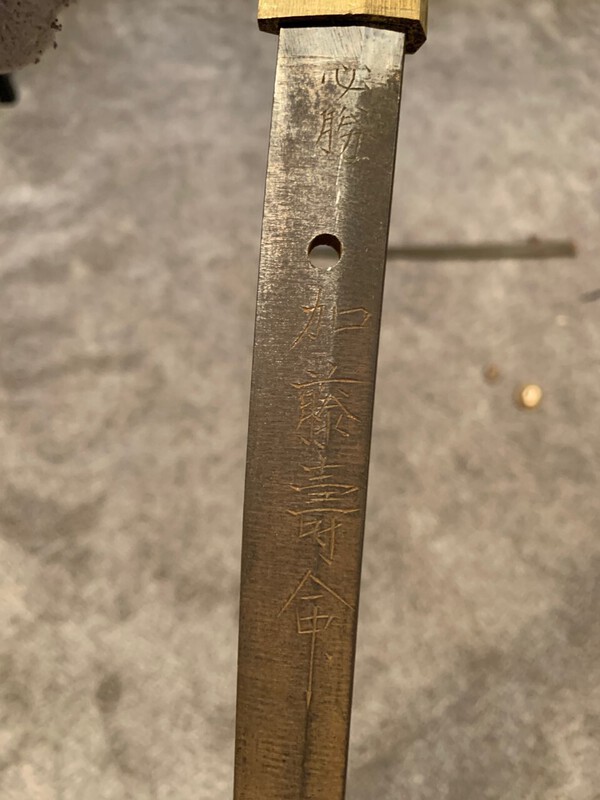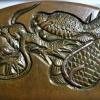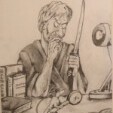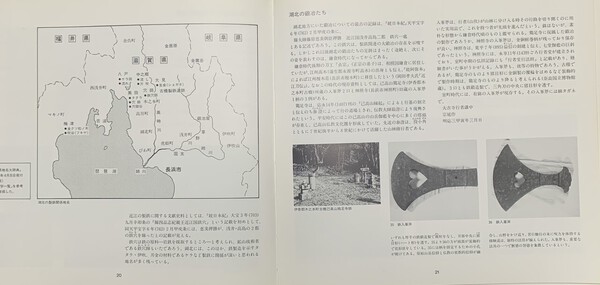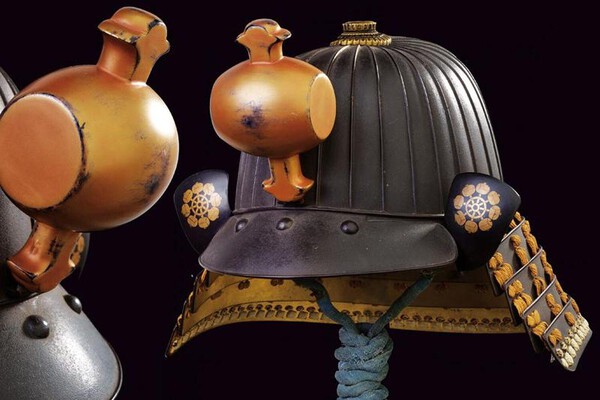Leaderboard
Popular Content
Showing content with the highest reputation on 02/03/2021 in all areas
-
Here's my recent amateur polish with Japanese stones/fingerstones. FYI, it's a custom wakizashi by an American smith in W2 monosteel, NOT a nihonto. Here's what I learned: It's extremely easy to permanently disfigure a blade. We're talking tolerances of 1mm or less. The wrong angle, too little or too much pressure... once the damage is done, the only way to fix your mistake is invariably by removing more metal. There is a good reason why the classical apprenticeship for togishi is many years (now 10). Basically, I learned just how much I really don't know. And it reinforced in me the belief that no amateur should ever try restoring historical artifacts without the knowledge and training to do it correctly. "How do you get to Carnegie Hall?" "Practice." The problem is that a modern W2 tool monosteel and Japanese tamahagane are different animals entirely. Given that premise, it follows that, to get good at polishing nihonto, one can only really pratice on nihonto. Without a mentor/master to teach you, it's not something you can learn by reading books or online guides. And if you don't know what you're doing, you shouldn't practice on historical artifacts for your own selfish pleasure and arrogance and desire to "get better" at the cost of many irreversibly damaged blades in your wake. I don't mean to step on anyone's toes, but these are just my thoughts as a beginner collector.5 points
-
Thought I would post a three character (Ichihara) NAGAMITSU Saku, who regularly made swords for the Osaka Army Arsenal. His swords were rated very highly for their cutting ability. This has no date, but a very small mune stamp. He signed his swords in 2 characters, and upto 10 characters. Debate has raged about which signature represent the best quality swords, and those that are "knockouts" for the war. This sword has an Itame haha, and a nice hamon with ko-gunome with ashi. It is in as found war time polish, and the detail doesn't photograph well. And Bruce, the fittings have heart shaped stamps, what can you tell me about this? Nagamitsu (and Emura) swords are becoming quite popular with collectors, and are now being papered.3 points
-
Yes, the pictures makes it look like a dent however in hand its perfect. The polisher who did it gets the lines very sharp and spends a great deal of comittment on establishing a good foundation polish. However on this one he did not go back all the way as the blade has likely been on its last polish. Therefore some sratches caused by the first "polisher" remained. At the end of the day there are good polishers and bad ones. Everybody should make sure to use a good one.2 points
-
Jean, at the risk of beating a dead horse... I agree with you. What I'm saying is, what should prevent amateurs like me from practicing and getting better and better at what my polish, so that one day, I can also become a "professional" and set up a website and charge people money to send me their blades? What is the difference between that, and other "professionals" who also surely practiced their way to better their knowledge and skills? If those other people get a pass, maybe people like me should, too. Maybe I'll just go meet some polishers and attend a seminar or workshop or demonstration, and then exaggerate to say that I was "trained by" those polishers to give myself a boost. Do you see the problem? I'm sorry if this seems argumentative. If so, that is not my intention.2 points
-
Daikokuten also moonlights as a god that presides over battles so he had a martial aspect and so was very relevant to samurai: https://www.Japanese-wiki-corpus.org/Shinto/Daikokuten.html Here's a picture of Daikokuten on a koto Soshu blade that I own (the weird colouring is a reflection of whatever was around when the photo was taken):2 points
-
2 points
-
2 points
-
Translation below. 興亞一心 = Kōa Isshin. 満鐵作 = Mantetsu saku = South Manchuria Railway (SMR) made. 昭和甲申春 = Spring 1944. Please post additional pictures over in the Mantetsu thread, in particular the markings on the top of the tang by the habaki. Attention Mantetsu Owners: A Survey2 points
-
A papered polished EMURA SAKU with no date in RS mounts. Emura was the Director of Okyama Prison during WW2. In fact, prison labour helped him with sword production, and polishing. Although Emura taught himself sword forging as a hobby, he made some really good swords, and was rated a medium to high grade Gendaito. The hamon is choji-gumome-midare, with small amounts of ara nie visible.2 points
-
Hi, I found this last week and had never seen anything like this before, so I had to have it. Contemplating having this restored and looking to see what others have to say. Do not have much into it but being unusual to me I would like to have it brought back to its glory if some of you think it is worthwhile. Never seen iron panels on a tsuka like this before and the dragons are finely detailed. Many of you probably have seen this. Blade is signed but the kissaki is broken.. The nagasa measures 11 3/4 inches so I believe it is a long tanto. The kamon(Mogami) are 22kt gold(tested) and has two on saya that are silver. Regards, John1 point
-
1 point
-
Hi, I am a new member to this forum but have been on other sites/forums, under my same user name, for many years. I am not an avid or very experienced Japanese Sword enthusiast but have always been interested in WW2 era items for collecting. I am listing my WW2 Shin Gunto Japanese Officers Sword here in hopes of selling it to fund some other projects of interest. I purchased this sword many years ago from a fellow WW2 collector and know little about its history or origin other that it was obtained by a returning WW2 soldier in the Pacific. I have several pics to show condition here and will send others if requested. The only issues I see are the obvious 2 dings to the scabbard and one nick to the sword blade. Otherwise it seems pretty decent overall. Please contact me through text or calls at - 309-242-1537 if interested in it. Selling for $1550.00 shipped in the US. Thanks again!1 point
-
1 point
-
Might be me, but the signature looks off and more recent than the rest of the nakago. And the Hamon looks like a Seki blade.1 point
-
Here someone correctly said that not only skills are necessary but high quality stones too. it'is right. I would add that nihonto knowledge is fundamental too. If a polisher is poor in kantei, he will be poor in togi too... To polish means first of all to study the sword, his creator, his school. It means to to be excellent in kantei. Unfortunally Ponzio till semptember 2017 demostrated was able neither to correctly read a torokusho and a nakago. His cv is only selfmade, and honestly report nothing interesting. Meanwhile Massimo Rossi is, on the other side first of all an estimated nihonto student who study tokens from 30+ years about. He was the only european to had ever partecipated to 3 different NBTHK togi contests, in 2009 (on suggestion by Yoshindo Yoshihara), 2010 and 2018... and to achieve 3 different nyusen. He polishes swords for Yoshindo Yoshihara here in Europe, and collaborates with some european museums. In may 2020 he had a slot in Japan Art Expo in Utrech to hold a conference on togi: https://japanartexpo.com/sword-related-presentation/ (event cancelled due covid pandemic). ...so please do not spend Rossi name near to Ponzio, they are white vs black, thanks.1 point
-
Obviously you would only deal with someone who is well known. Some guys have 30+ years experience.1 point
-
Or boiled n plucked then stewed....ther was a time n not too far past it wouldn't have made past post one. Time marches on.1 point
-
Hi JP, you been in this hobby a good while now and your wise enough to work out who is capable of doing what. As you say, we cant all send off swords to Japan for one reason or another, or even want to. Its always a risk shipping stuff overseas anyway, plenty here have had hassles Get a set time for the work, dont pay up front. Better in future just to get on with it, bringing it up here will always ruffle feathers.1 point
-
Neil i love those nagamitsu. I have one too. But your koshirae and blade looks like new. Incredible. Rinji Seishiki koshirae would win every design price. Nearly 80 years old and never gets old. If the time of swords will come back - that would be my personel choice.1 point
-
I have a TENSHOZAN sword in Shingunto koshirae. The blade is 73.5 nagasa with little sori. It came to me as a wreck with a story, which I will tell in the dedicated Tenshozan thread sometime. I post this here to simply give the inscriptions for our scribes. NENGO is SHOWA 15th YEAR 6th MONTH LUCKY DAY = June1940 TACHI MEI is TENSHOZAN TANRENJO SAKU There are no other markings on the nakago, save for a tiny "nick" on the nakagojiri. BaZZa.1 point
-
1 point
-
1 point
-
Well Paul, I bet you never thought that a learned debate about Japanese astrology and the social rank of the original owner of your habaki would ensue........... It's a nice thing and was a very nice gift, without wishing to set another cat among the pigeons, I wonder what sort of sword it came from? All the best.1 point
-
Hi Bruce. Don't get too excited, I think it's a horn trim on shirasaya. All the best.1 point
-
Thank you Stephen. EDIT: Okay, have seen them and have to admit it is intriguing. I'm not convinced it is the sword because I’m sure you can see a lot of things that aren’t there in an unpolished sword AND the bohi goes against it, still... intriguing and certainly a very nice sword that would justify a polish imho.1 point
-
George I think you have helped make my point in an odd way. Daikoku is the subject of the habaki not "I'm a rat and proud of it!" - I'll admit that symbols of Daikoku were used on samurai goods. However the rat IS a symbol of Daikoku and not usually symbolic of "the year of the rat". I say again otherwise we would see many more items, samurai or merchant, depicting sheep. After all sheep year people are proud warriors too. In the absence of other evidence, I feel we have to see this as a symbol of Daikoku, and we can surmise that it was on a merchant sword since in the Edo period, when it was most likely made it was Buke custom for boys to shun money and accounting as being unmanly. You don't have to agree this is just how I see it. -t1 point
-
1 point
-
1 point
-
1 point
-
I would like to add that a good polisher must above all respect the work of the blacksmith, he is there to enhance it, and that starts with the respect of the architecture; for example he must respect the ratio shinogi ji / shinogi as well as the ratio thickness at mune / thickness at shinogi. A bad polisher can make a kamakura blade end up looking like a shinto blade.1 point
-
The issue of papers respectability is greatly debatable to the point few actually being troll enough to fully wonder there. Here is my very personal list, in decreasing order of my very personal, erroneous and ignorant trust: Tanobe Sayagaki Honma Sayagaki. Pricewise I would say its the best in a sense that he did very few sayagaki while essentially he was the founder of modern kantei. Published by Fujishiro. Modern NBTHK (note - very conservative). Fujishiro papers. Note - most put them below NBTHK, but in my personal experience Fujishiro papers that NBTHK "gimeis" have a solid chance to get sayagaki by Tanobe san. NTHK. NPO is disliked by those convinced its a group completely dominated by one person, Miyano san. Non NPO is disliked by those having issues with almost 100% of this shinsa being active dealers (rather than polishers etc.). The groups also had a very ugly divorce with a lot of interesting accusations. Kanzan Sato Sayagaki. Things like this: https://sword-auction.com/en/product/2908/as20415-%E8%84%87%E5%B7%AE%E7%84%A1%E9%8A%98%E9%95%B7%E8%88%B9%E5%B8%AB%E6%99%AF/' Are too common to ignore. It gets worse further towards 1976 or so. But it has to be noted - its an absolutely stunning blade and apparently his sayagaki sometimes have a tendency to reflect quality or provenance more than precise kantei per se. So it can be an indicator of those qualities and plus to have, but I would not bet on any of his attributions being 100% accurate. JASMK. Its one dealer operation. This being said, they are not bad but almost never cover upper grade items. Green papers NBTHK. 90% are completely ok, 9% are optimistic by a whole grade (Taima being called Soshu Yukimitsu) 0.1% were born to be absolutely fake. Note - there are whole groups of things that do not repaper by NBTHK modern like Muramasa with a calm hamon because the standards change. Honami Nishu Sayagaki. They did like Sayagaki in 1970s and apparently this person was a second choice. Very large percentage of problematic blades. Almost everything else - for reference only. It might be right, and then it sort of boosts the value, especially if its some early Honami judgement, but has a large chance to be wrong, fake or both or either.1 point
-
1 point
-
Having been burned twice I never look at Damiyo54's listings. I suggest that you don't waste your time.1 point
-
Sorry Thomas, you are incorrect. There are many verified samurai articles with rats on them. Your anti-commercial view is quite romantic (but inaccurate...). The fact is that we don't see many decorated habaki at all (meaning with figures not just cross hatching, cat scratching, etc.) - that's why you don't see many chickens, sheep, cows, snakes, etc. on them... What do you think happens to the 1/12 of Samurai that were born in the year of the Rat? Were they forced to become merchants? As you say, rats are sometimes the "harbinger of material wealth", but that is only sometimes the case and when it is, it is because of their association with the Japanese Gold of Wealth Daikoku. While a rat is one of Daikoku's secondary attributes, his main attribute is A Golden Mallet called Uchide no Kozuchi - otherwise known as the "mallet of fortune”. You can find many swords and tosogu decorated with Daikoku (and his attributes: the Mallet, a Rat or a Bale of Rice), but I imagine that you would say all of those are merchant swords. However, you will find all of those attributes on Katana and Daisho which should be reserved for Samurai. Surely you've seen some of the great Daikoku horimono on swords that were owned by Samurai. Putting the God of Wealth or his attributes (the mallet or rats) on Samurai only articles debunks your assertion that Samurai wouldn't aspire to wealth. That's more of a Western romantic interpretation (how do you think they paid for their Wars???) Finally, surely you've seen kabuto with old maedate in the shape of a golden hammer (I've seen at least 50 over the years from various periods) - well, merchants didn't wear helmets did they... These are clearly recognized as Uchide no Kozuchi the Golden Mallet symbolizing Daikoku the God of Wealth (and they are on Samurai helmets....).1 point
-
George - I beg to differ. If this were the case we would see piles of chickens, sheep, cows and snakes on old discarded habaki. They simply do not exist. The rat in Japanese art, especially kodogu, is recognized as a harbinger of material wealth. A very un-Samurai aspiration... -t1 point
-
The Nihonto world is small. I have met all these people the only polisher fully trained is Massimo Rossi. Zenon Vandame was partially trained in Japan. For the others, I sall not say as Jacques that they are incompetent. They are not fully trained in Japan, but some of them were basically taught by Laurent Milhau. Some of them have passed some times in Japan, training. Some were partially trained by a fully Japanese trained French polisher who has given up polishing more than 20 years ago. Some are self taught. I had several diners with Robert Burawoy at his home and I have seen his private collection (among them a Muramasa tanto and an impressive collection of keris). He has now been retired for years. His galerie was in île St Louis, same for his flat which was the reunion of several flats in centuries old joint houses. Walls were covered by shelves loaded with books, with here and there armours, set of bow and arrows... a fantastic museum. Those were the days....1 point
-
1 point
-
The Japanese follow a 12 year repeating Zodiac with one of the years being the year of the Rat. As such, approximately 1/12 of Japanese are born in the year of the Rat. Many years ago, they believed that your Zodiac animal affected your behavior and fate and actually made important decisions (e.g., marriage, promotion, etc.) based on your animal sign. Japanese from all classes and vocations followed these traditions. Therefore, it is just as likely that a Samurai carried a sword with a rat on it as a merchant.1 point
-
1 point
-
A properly made saya should only hold the habaki by the ha and mune sides. Maybe it wouldn't wear as quickly as we think.1 point
-
Since the rat is a companion to Daikoku it is a symbol of wealth - most likely this would have been on a merchants sword and therefore not being drawn often enough to wear down the carving on the habaki... -t1 point
-
By far the greatest danger to lacquer is light, and in particular sunlight. Whilst I am no expert on the chemistry of urushi, I understand the lacquer particles are surrounded by adsorbed water that is lost by light absorption (if I remember by chemistry from the very distant past the term 'micelles' comes to mind). The resulting damage leaves to the loss of the glossy surface leaving it dull and absorbent. This process is irreversible and the only 'cure' is either to apply a material to the damaged surface that seals it, or to remove the damaged layer. The car re-finishing materials mentioned by Piers either cut away the damaged top coats to reveal fresh lacquer underneath or are wax-like substances that cover the damaged layer and put a polished coating over it. There is a material sold called 'Armour' used to polish violins and similar that seems to be a wax containing a mild abrasive that seems to do both processes at once. Ian Bottomley1 point
-
1 point
-
Your welcome JP I put up these 3 videos. The first one is not a comparison but just is of a section in need of full polish. This side is opposite of the pictures above. Look closely at the twisting Chikei and thick lines of Hataraki running down through the Hamon to the Ha-saki. https://youtu.be/FQPmOUJzdgw https://youtu.be/mtSSLaSdEtE https://youtu.be/lKaVuI4ubLQ All the best friends, Stephen T.-1 points



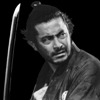


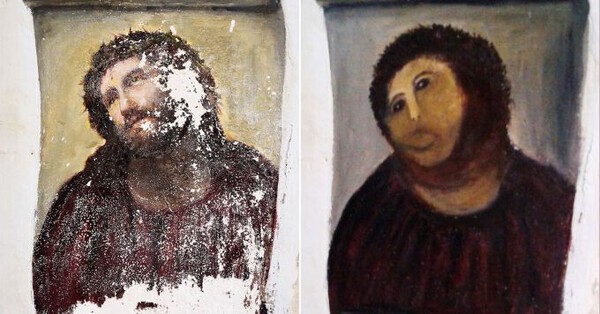

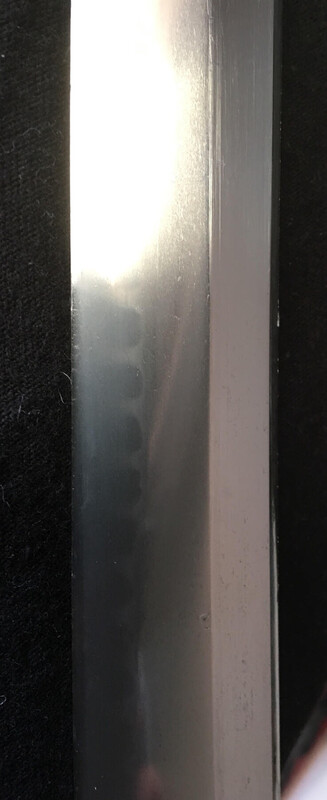



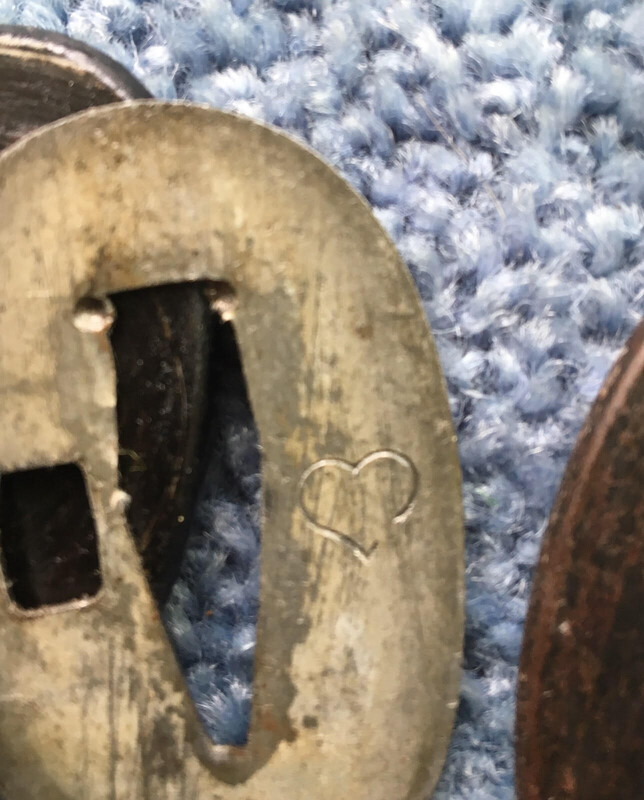


















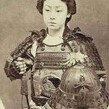
.thumb.jpg.80f6c0affe024c3107f377569fc37877.jpg)
.thumb.jpg.8ac607f5417b9ef0971c8e46d8bb8666.jpg)
.thumb.jpg.e715eb76a11f09fec3130558876e30a3.jpg)

